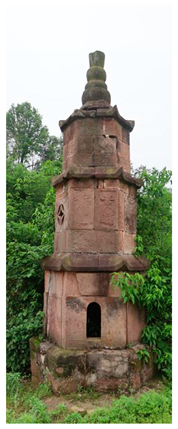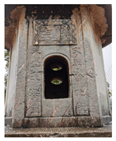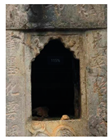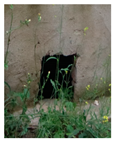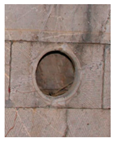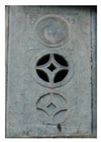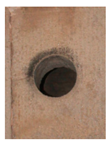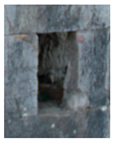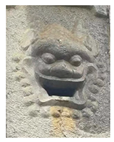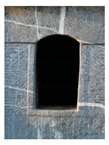Abstract
This study focuses on Xizi-belief (惜字信仰) and provides a comparative analysis of the religious philosophies of Tianming (天命) and Tianli (天理), using the Hunan region as a case study. Through anthropological methods and fieldwork, this study explores how Classical Confucianism, Taoism, and Buddhism shape and guide word-cherishing behaviors based on the conceptual philosophies of Tianming and Tianli. The Tianming conception views characters as revelations of heavenly destiny. Through religious rituals, people cherish words to honor heaven and seek to change their destinies through heavenly forces, reflecting worldly desires and spiritual pursuits and emphasizing heaven with personhood. In contrast, the Tianli conception sees words as carriers of moral and natural laws. Guided by Confucian ethics and the concept of karma and retribution, it influences people’s moral norms and behavioral practices, reflecting the metaphysical moral law of a just and righteous heaven. Both conceptions not only involve the worship and protection of words but also profoundly embody a deep understanding and pursuit of the order of the universe, moral norms, the ethics of life, and the meaning of life. This study reveals three modes of influence: the religious philosophy integration model, the ritual practice model, and the architectural embodiment model. These models emphasize the positive impact of Xizi-belief on ethics and social life, prompting people to demonstrate positive guidance in human behavior through reverence for Tianming (mandate of heaven), adherence to Tianli (principle of heaven), and respect for nature. Under the guidance of classical religious ethical principles, the spread of Xizi-belief and the practice of Xizi religious ceremonies promote the harmonious development of individual virtues and social order, achieving harmony between humans and the universe.
1. Introduction
1.1. The Religious Philosophy of “Tian”
In traditional Chinese culture, “Tian (天)” is a philosophical object with profound significance and multiple connotations.1 As religious practices evolved, “Tian” became an object of worship with religious attributes, and the concepts of “Tianli” (天理) and “Tianming” (天命) emerged as foundational in traditional Chinese religious philosophy. These two modes of worship are significant for interpreting the ancient Chinese religious philosophical system and have profoundly influenced the formation of traditional religious folk beliefs. The early distinction between the views on “Tian” can be seen in the Confucian doctrine that “Destiny is like a command. Inner nature is the principle itself” (命,犹令也.性,即理也) (Doctrine of the Mean, 中庸章句), revealing the first category of advocacy, namely the theory of Tianli.2 In contrast, the view of Tianming, which emphasizes the intractability of individual destiny and suggests that human fate is determined by supernatural forces, is encapsulated in the saying “life and death have a destiny, wealth and honor are granted by Tian.” (The Analects of Confucius: Yan Yuan, 论语·颜渊.) This represents the early differentiation in perspectives on “Tian”.
The development of civilization has deepened the religious worship of “Tian” into a speculative discourse on the relationship between Tian and humanity, showing a developmental path from theology to philosophy. In this process, debates on whether the Tianli way can be defied have further deepened the distinction between the views of Tianli and Tianming. The concept of “Tian” has undergone a transformation from the worship of a deity to a philosophical construct (Hanmin Zhu 2023, pp. 28–36). The Confucian natural philosophy in the Book of Changes (易经) focused on the time-sequence view of the Tao of heaven and its ecological significance, revealing the important position of the Tao of heaven in the natural order (Qiao 2011, pp. 48–56). Subsequently, in political philosophy, Confucianism actively integrated the concept of the Tianli way into governance strategies (Peng 2018, pp. 117–22), making it an effective political tool. Thus, royal power, through the relationship between Tian and humanity and the design of rites and music, constructed a social hierarchy based on power (G. Zhao 2023, p. 11). The Confucian definition of the nature of “Tian” shifted from “volitional Tian” to “Tian of principle”, and the function of “Tian” transformed from the nature of all things in Tian and earth being endowed by destiny to being transformed by the principle of Tian (Zheng and Huang 2024, pp. 1–9). In the vast academic research on “Tian”, “Tianli” and “Tianming” have always been two clear main threads.
The core of the Tianming view lies in the relationship between Tian and humanity, advocating that individuals achieve a union of “virtue” and “destiny” through personal moral cultivation and social practice (Gao 2024). The traditional view of Tianming includes “punishing evil and promoting good (惩恶扬善)”3 and “destiny is determined by Tian (命由天定)”.4 In general, Confucians believe that one’s inner nature and virtue are bestowed by Tian, and they advocate “knowing destiny, fearing destiny, and guarding destiny” (知天命-畏天命–守护天命) (F. Zhao 2015)”. However, in Confucius’s philosophical system, there is a dialectical view. From the perspective of the relationship between Tian and humanity, Confucianism is the least willing to labor over “destiny”; it is concerned with human affairs (Qin 2008, p. 319). The early Taoist perspective on “destiny” is “effortless action” (无为)5, which reflects their view on destiny. Zhuangzi’s approach to destiny, encapsulated in the concept of “using the mind like a mirror (用心若镜)”, highlights the Taoist understanding of fate as contingent and unknowable. Taoism does not advocate being bound by fate; instead, it encourages people to achieve spiritual freedom and liberation by following Tian and embracing destiny. On the contrary, the view of Tianli is closer to a moral theology. Song-Ming Neo-Confucianism, through theorizing and speculating on the Confucian religious view of Tianming (Edited by the Editorial Department of Literature, History and Philosophy 2011, p. 15), considers the ethical norms such as the relationships between a ruler and subject, a father and son, benevolence, righteousness, propriety, wisdom, loyalty, filial piety, integrity, and frugality to be equivalent to the inevitable laws of the universe, that is, the Tianli principle (Qin 2008, p. 323). It emphasizes understanding destiny through individual moral cultivation to achieve the goal of governing the country and pacifying the world (Q. Zhang 2002, p. 238).
1.2. Brief Review of Published Literature and Research Gaps on Xizi-Belief
Xizi-belief (惜字信仰) refers to a folk religious belief evolved from the traditional cultural customs of respecting and properly handling characters and paper in Chinese folk culture (Sang 1996, pp. 81–86). This is not only a spiritual religious worship of all things but also interpreted as a unique cultural phenomenon in ancient Chinese society. The formation of this belief stemmed from the sacredness endowed to characters at the beginning of their production (Wei 2004). According to Huainanzi: Ben Jing Xun (淮南子·本经训), in the past, when Cangjie wrote books, the sky rained millet and ghosts cried at night (昔者, 仓颉作书而天雨粟, 鬼夜哭) (He 1998, p. 571). This myth endowed writing with a sacred status, and people believed that writing had the power to communicate with heaven and earth and enlighten wisdom. As shamanistic practices receded, reverence for written characters emerged as a cultural mechanism. In Qi Yun (气韵), for instance, characters embodied the Confucian ideal of “wen yi zai dao” (文以载道): using writing to transmit personality and ideology. This development reflects how characters transcended ritual functions to become cultural paradigms, their preservation signifying both intellectual stewardship and cultural identity formation.
The earliest known work related to Xizi-belief is the Yanshi Jiaxun of the Northern Dynasties, which explicitly emphasizes the respect for the “canonical texts of the sages”, such as “Some may scatter sacred texts on tables and desks, leaving them disorganized and often soiled by children or servants, or damaged by wind, rain, insects, and rodents. This is truly detrimental to one’s virtue. Whenever I read the books of the saints, I always treat them with reverence and respect. Even if it is old paper containing passages from the Five Classics or the names of wise men, I dare not use it for mundane purposes out of reverence”; “或有狼籍几案,分散部秩,多为童幼婢妾之所点污,风雨虫鼠之所毁伤,实为累德。吾每读圣人之书,未尝不肃敬对之。其故纸有五经词义及贤达姓名,不敢秽用也” (L. Wang 1993, p. 55). During the Tang and Five Dynasties periods, the scope of Xizi was expanded from “sacred texts” to “documents and paper”. It was not until the rise of the imperial examination system in the Song Dynasty that readers began to regard Xizi as a way of accumulating merit and praying for literary prosperity, and the wind of Xizi gradually prevailed. During the Ming and Qing dynasties, when Zhu Yuanzhang vigorously promoted Cheng-Zhu Neo-Confucianism (程朱理学) as the official philosophy, there arose a social phenomenon of people casually tearing up books unrelated to examination materials. In response to this, local governments began to formulate different types of moral exhortation books. The idea of “Cherishing Papers with Characters” underwent refinement and matured. The folk belief in cherishing written words reached its pinnacle, driven jointly by both officialdom and local gentry. The custom of cherishing characters had penetrated into various aspects of folk life and become a detail in the daily lives of ordinary people (N. Li 2011).
In Xizi-belief, the concept of destiny is manifested as people’s belief in the fate and blessings carried by words. People believe that by cherishing calligraphy paper, one can accumulate merit and pray for divine protection. This belief is particularly prominent in Taoist and Buddhist cultures. Taoism strengthens communication with the gods through the ritual of cherishing characters, expressing worship and reverence for them. It believes that burning characters can transform the magical power of words into medical skills to cure diseases. Buddhism emphasizes the theory of karma and retribution, where the handling of words serves as a criterion for judgment and determines rewards and punishments for good and evil in social life. Although the transcendent force of Tian oversees the process, the outcomes are ultimately determined by one’s own actions. The practice of this belief in the concept of destiny has enriched the cultural connotation and religious color of the folk custom of cherishing characters. On the contrary, the Tianli view presents a more rational and moral perspective, focusing on the regulation of cosmic order and moral laws, as well as placing greater emphasis on human subjective initiative and moral responsibility. In this view, cherishing calligraphy paper is not only a practice of personal prayer and blessing but also a moral cultivation and cultural consciousness of respecting knowledge and inheriting culture. Buddhism, on the basis of the theory of karma and retribution, further proposes the moral principle of “do not do evil, practice good deeds”, encouraging people to improve their life realm by performing good deeds and accumulating virtue.
From the above background, it can be seen that the dissemination and practice of Xizi folk customs in traditional society have always been accompanied by the entanglement of the dual religious philosophies of “Tianming” and “Tianli”, which are rarely studied in existing research. The combination of the folk customs of cherishing characters and the religious philosophy of “heaven” raises a research question: what is the significance of the heavenly mandate and principles reflected in the folk customs of cherishing characters? In fact, this reverence for heaven has always been one of the main themes in the development and dissemination of Xizi-belief. Existing research mostly focuses on theoretical analysis and literature interpretation, with relatively little exploration of the specific cultural representations and real-life cases of the “mandate of heaven” and “heavenly principles” views. In particular, there is a lack of research on the influence of Confucian and Taoist “heavenly” philosophical views on the religious custom of “cherishing characters and customs”. There are significant philosophical imprints of “mandate of heaven” and “principle of heaven” in the folk customs of Xizi. Clarifying the differences between the two is of great value for in-depth research on Confucian and Taoist religious philosophy and the correct interpretation of Xizi folk customs.
1.3. Research Materials and Methods
The methodology of this paper is grounded in field studies and literature analysis. Firstly, through a comprehensive literature review, papers concerning Tian worship, Tian philosophy, Xizi-belief, Xizi customs, and Xizi Pagodas were collected. These were then analyzed in conjunction with books, theses, reviews, and journal articles, integrating them with theoretical models of traditional Chinese religious philosophy to establish the philosophical backdrop of Tianming and Tianli. Additionally, based on fieldwork and various recording methods, our team employed camera photography, drone mapping, and laser ranging to document 72 Xizi Pagodas in the Hunan region. Ultimately, all first-hand materials, including images, data information, and interview recordings, were evaluated. And, ultimately, we selected 38 well-preserved Xizi Pagodas as research cases through data integration and expert evaluation (Figure 1, Table 1). The sample was mainly distributed in three cities: Chenzhou, Yongzhou, and Changsha. Both Chenzhou and Yongzhou belong to the southern Hunan region, and their urbanization process is relatively less developed. The ancient buildings of the Ming and Qing dynasties are well preserved, so the sample size was relatively large. Changsha is the capital city of Hunan Province. Although the sample size was small, due to its developed historical and economic conditions and perfect modern protection strategies, the Xizi Pagodas in the area have higher architectural specifications and retain more complete details.
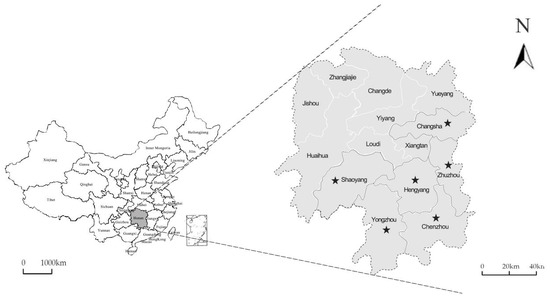
Figure 1.
Research area.

Table 1.
List of Xizi Pagodas in Hunan Province involved in this study.
2. Tian Worship and Religious Philosophical Manifestation in Xizi-Belief
2.1. The Religious Philosophical Origin of “Tian” in Xizi-Belief
To thoroughly elucidate the concepts of Tianli and Tianming within Xizi-belief, it is imperative to explore the analogous relationship between “sacred writing” in the Xizi-belief system and “Tian worship” in classical Chinese religious philosophy. This parallelism establishes a fundamental link between Xizi-belief and the philosophy of Tian.
In terms of Tian worship, the early religious ontology of ancient China endowed “Tian” with the supreme status. In this conceptual system, “Tian” is not only the highest authority for all human activities, but its will also surpasses all human wills, becoming a universal and irresistible force. The secular ideals pursued by people, such as success in the imperial examination and the prosperity of the family, need to be realized through personal unremitting efforts. To a large extent, these efforts are regarded as compliance and the practice of Tian’s will.
In terms of sacred writing, the Chinese have always regarded words as sacred and inviolable. Words are not only endowed with the important functions of communicating with Tian and Earth and enlightening wisdom but have also become a symbolic medium between those who believe in the religion of Tian and secular nonbelievers. Wu Xi (巫觋) were the earliest historians in human society to preserve human history through “writing”. During the pre-Qin period, Wu Xi were responsible for the construction and maintenance of religious beliefs, social systems, and righteousness and were in charge of state rituals and social indoctrination, acting as sacrificers on behalf of the Emperor of Heaven to carry out indoctrination (Dang 2021). Through divination, sacrifice, and “writing”, they recorded the sacred oracles of gods in oracle bones and inscriptions, which demonstrated the sublimity, majesty, and authority of heaven. This not only closely linked writing to heaven but also conferred sanctity on writing. The attitude of cherishing Chinese characters is reflected in the philosophical and religious traditions of Confucianism, Buddhism, and Taoism.
Two pivotal pieces of evidence underscore the deep connection between Taoism and Xizi-belief. Firstly, Cangjie, the mythological inventor of Chinese characters, is also identified as a historian of the Yellow Emperor.
Gao You’s note to the above Huainanzi quote says the following:
“仓颉始视鸟迹之文造书契则诈伪萌生,诈伪萌生则去本趋末,弃耕作之业而务锥刀之利,天知其将饿,故为雨粟;鬼恐为书文所劾,故夜哭也。‘鬼’或作‘兔’。兔恐见取豪 (毫) 作笔,害及其躯,故夜哭。”(He 1998, p. 571)
This origin myth underscores the intimate bond and profound resonance between Tian, humans, and the written word. Cangjie created writing after observing and being inspired by the tracks of birds and animals. Legend has it that when he created writing, corn fell from the sky and ghosts cried at night. The corn fell from the sky because the sky was afraid that after learning to write, people would engage in commerce and give up farming, resulting in famine. The ghosts cried at night because they were afraid that after people learned to write, they would impeach them by making sparse writings. The character for “ghost” could be a typo for the character “rabbit”. So, there is another theory that rabbits cried at night because they were afraid that when people learned to write, they would take the hairs from their bodies and make brushes, thus endangering their lives.
The Yellow Emperor holds a paramount position in Taoism, revered as a deity who attained Taoist enlightenment and was an ancestral god within the Taoist tradition. He is also regarded as the originator of Taoism and the first ancestor of humanism, with his thoughts exerting a profound influence on Taoist teachings and belief systems (Z. Zhang 2018). Cangjie, the historian of the Yellow Emperor, invented writing, thereby forging a particularly strong association between Taoist beliefs and the written word.
Secondly, influenced by Taoist talisman culture, texts have been imbued with magical powers to suppress ghosts and deities within Taoist traditions. People believe that writing and burning specific texts or talismans can drive away evil and pray for good fortune (P. Zhao 2013, pp. 54–55). The Three Official Written Confessions (三官手书) are a ritual in Tian Shi Dao that reflect the attitude of the Taoist toward written papers. The “Tai Shang Xuan Ci Zhu Hua Zhang (《太上宣慈助化章》)” compiled by Taoist Du Guangting at the end of the Tang Dynasty recorded the details of the ritual. Believers would write down their names and confessions in a written form, in triplicate. One was buried in the ground; one was submerged in water; and one was burned to send to heaven in the smoke. This sent the message to heaven, Earth, and the Yellow Springs (underworld). The idea that burning material sends its spirit to the heavens is an old and cross-cultural belief. Burning words to convey spirit or will to deities is indeed an ancient and cross-cultural phenomenon. This ritual reflects the Taoist belief in the power of words to connect to the heavens.
Confucianism’s account of the relationship between heaven and humans has parallels with the theory of heaven in Xizi-belief. Cherish characters and respect Tian (惜字敬天) was one of the important theoretical foundations for Xizi-belief. This phrase creates a semantically structured correspondence between the concepts of “cherish characters” and “respect Tian”. Because cherishing characters is a human behavior, it reflects a profound correspondence between humans and Tian. This relationship is similar to the ancient Chinese Confucian theology of “Tian and humanity respond (天人感应)”, believing that Tian can affect human affairs and predict disasters and auspicious events and that people’s actions can also respond to Tian. This is what the scholars of Neo-Confucianism advocate: “All the principles of cultivating one’s nature, the methods of knowing the divine and transforming, the mechanisms of Tian and humanity respond, and the signs of governance and existence and death are all completely written” (凡存心养性之理,穷神知化之方,天人感应之机,治忽存亡之候,莫不毕书之) (Song 2014, p. 633). Zhu Xi’s concept of “unity of heaven and man (天人合一)” holds that heaven and humans share common origins and characteristics (Wang and Wang 2012). The phrase “Cherish characters and respect Tian (惜字敬天)” also embodies the harmony between human behavior and heaven.
Buddhism’s emphasis on scripture also reflects the cult of the written word. The proper disposal of sacred writing, which encompasses all forms of written text, is a fundamental principle in Buddhist thought. Written scripture should not be discarded casually in waste. Instead, it must be burned as a means of respectful and proper disposal. In addition, the shape of the Xizi Pagoda was taken from the stupa (He et al. 2024). In order to use the supernatural power of text to achieve various wishes, such as success in the imperial examination and the prosperity of the family, people began to build Xizi Pagodas and Xizi stoves and other carriers of faith. These buildings were not only symbols of faith but also important places for people to practice their faith in daily life (Chen and Liu 2014, pp. 51–57).
In summary, Xizi-belief’s religious philosophy stems from the fusion of “Tian worship” and “sacred writing” and originates from the similar idea of mutual induction between humans and heaven in Confucianism, Buddhism, and Taoism. It emphasizes a profound correspondence between “Tian” and “people”, reflected in their interactive and interdependent relationship. Tian serves as the foundation for understanding both natural phenomena and human existence, while the relationship also highlights human influence on nature. This integration of “following Tian” and “responding to human” is the religious philosophical origin of the folk custom of “cherishing written paper”. Xizi-belief and its ideological concepts had a profound influence on the thinking and behavioral patterns of the ancient scholarly group in integration with religious philosophy. They also played an active role in maintaining the traditional social order and expanding the culture of farming and reading, so they could be widely spread.
2.2. The Ethical Connotations of “Tian” in the Xizi-Belief Model
“Cherishing characters and respecting Tian (惜字敬天)” is often used to describe a specific model of Xizi-belief. In fact, Tian has always been a symbol of ethics and morality in Chinese culture. From the Confucian perspective, Tian serves as the foundation for moral and ethical principles. It is not merely a cultural aspect that seeks to fulfill biological inclinations or reflects the prevailing public sentiment of a particular time and place but rather represents a tradition that encapsulates societal and cultural values, within which humans are deeply integrated (K.J. Turner 2023). In this ethical model, due to the dynamic relationship between Tian and humanity, Tian worship differentiates into two views: the “Tianming view”, where Tian is the acting subject, and the “Tianli view”, where humans are the acting subject.
From the perspective of the Tianming theory, Tian has the ability to control natural phenomena and human society. Applied to Xizi-belief, it is manifested as the expectation that cherishing characters can bring specific welfare. “Life and death have a destiny, wealth and honor are granted by Tian. (死生有命, 富贵在天)” People believe that an individual’s life and destiny are determined by Tian. In this view, Tian is the “destiny Tian.” Tian has moral standards for rewarding good and punishing evil, based on people’s fear of disasters and that performing good deeds can bring auspiciousness and not performing good deeds can bring disaster. The “Tian” in “cherishing characters and respecting Tian” has dual practical and symbolic significance, that is, the physical dome covering the human world and the “destiny Tian” of the “Tianming theory”. Therefore, it reflects the awe of and emphasis on “destiny”, and people hope to practice Tian through the good deeds of cherishing characters to ultimately achieve the wishes of avoiding bad luck and seeking good fortune and the prosperity of literary fortune.
From the perspective of the Tianli theory, although heaven dominates natural phenomena and human society, the cosmological proposition originating from the Han Dynasty that “Heaven is the ancestor of all things, and all things are not generated if not for Heaven (天者, 万物之祖, 万物非天不生)” emphasizes its significance as an origin. However, human moral agency plays a leading role in fate, and “heaven” is the weight of moral discipline. From this perspective, the “Tian” in “cherishing words and respecting Tian” refers to “heavenly principles”, that is, “ethical heaven”, advocating that cherishing the good deeds of words has the function of constraining, regulating, supervising, and educating people. This process of using “Tiandao (天道)” to promote ethical norms is summarized as “human ethics and morality originate from heaven (人性伦理道德源于天)” (Zou 2020, p. 47). Therefore, a person’s moral endowment is inspired by heaven, but the basis of ritual, which guides human behavior, originates from human interpretation and application of heavenly principles. We should follow the “laws of heaven” and act according to the behavioral norms revealed by heaven. “The Tianming is called nature”6, and human nature is rooted in the Tao of heaven (Zou 2020, p. 47). This does not mean that human nature is born unchanged, but it requires self-restraint and self-cultivation through postnatal development, ultimately achieving the moral realm of the “unity of heaven and man”.
Therefore, the belief model of “cherishing characters and respecting Tian” contains the dual philosophical thoughts of Tianming and Tianli. Tianming focuses on the concept of destiny and fortune carried by text, believing that cherishing characters on paper can accumulate merit and pray for the protection of destiny. Tianli emphasizes the moral order behind the text, believing that cherishing characters on paper is a manifestation of following the Tianli principle and maintaining moral order.
2.3. Philosophical Ontological Distinction Between Tianli Theory and Tianming Theory in Xizi-Belief
Xizi-belief crystallized the philosophical duality between Tianming and Tianli, manifesting them as two distinct action orientations: one seeking divine favor through Tian (cosmic) supplication and the other enforcing ethical order through moral codification. It is crucial to combine philosophical foundations with Xizi-belief patterns, where “Tianming” and “Tianli” constitute different aspects of theory, while the “ideal” and “actual” frameworks showcase the diverse practices of Xizi-belief (Figure 2).

Figure 2.
A theoretical model for the relationship between the theory of Tianming and theory of Tianli.
Rooted in Zhou dynasty cosmology, Tianming initially served to legitimize dynastic rule through its fluid association with virtue; as the Book of Documents (Shangshu 尚书) declared, “Heaven’s mandate resides with the virtuous” (天命惟德). In traditional Chinese society, the “emperor” was the embodiment of “Tian” (Wu 2025). Feudal rulers often equated themselves with the embodiment of heaven, legitimizing their power through the title of “emperor” and equating their own will with the laws of heaven (Jiang 2023, pp. 57–95). This concept evolved into a mechanism for communal prayer for blessings, exemplified in Xizi practices where卜字 (burning oracle characters) became acts of cosmic negotiation. Due to the existence of “Tian” as a ruler, Tian appeared more mysterious and absolute, and its rule was not bound by morality, which reflected people’s deep awe of nature and destiny.
Conversely, the Song-Ming Neo-Confucian reconceptualization of Tianli transposed this cosmic dialog into a framework of moral absolutism. Zhu Xi’s axiom “Principles precede phenomena” (理在事先), articulated in Zhuzi Yulei (《朱子语类》), redefined textual preservation as ethical stewardship. With the continuous standardization of the Xizi regulation, the diversified regulations of cherishing words made the moral norms more detailed, thereby transforming slipshod paper disposal into a metaphysical transgression. This institutionalization positioned written characters as vessels of immutable moral law rather than negotiable divine messages. This assertion showed that people could make up for the unhappiness of destiny through their own moral norms, thus achieving moral harmony between heaven and humans.
Therefore, the view toward Tian reflects the dialectical unity of “the way of heaven is constant” and “the way of heaven is impermanent” in Xizi-belief while also echoing the philosophical differentiation between “ideal” and “actual”. Thus, Xizi-belief became a philosophical model where morality and destiny coexisted: the act of cherishing paper with writing enforced Confucian self-cultivation, while its Xizi ritual sustained the vision of Tian as an interactive cosmic force. In Xizi-belief, this differentiation has important comparative research value.
3. The Comparison Between the Theory of Tianming and the Theory of Tianli in Xizi-Belief
3.1. Important Embodiment of Tianming’s Theory in Xizi-Belief
In Xizi-belief, the concept of “Tianming” occupies a core position, which is deeply influenced by the three religious philosophies of Confucianism, Taoism, and Buddhism, even though they each have different priorities. In the Xizi-belief system, “Tianming” is understood as a supernatural force that is closely linked to the fate of the individual through the medium of words.
Within the Xizi-belief system, the notion of “Tianming” is intricately connected to the arcane forces depicted in Taoist mythology. This connection is predominantly expressed through the fulfillment of earthly requisites and mundane aspirations, such as excelling in imperial examinations, healing, procreating, and ensuring the prosperity of one’s lineage, all by harnessing the mystical powers ascribed to Taoist mythology.
To begin with, the pursuit of success in imperial examinations was a significant motivation. As the Imperial Examination System evolved, it offered numerous students from impoverished backgrounds the chance to seek education. They aspired to appease the God of Culture and Literature (文神) by reverently studying texts and praying for success in the exams. Consequently, scholars would frequent sites such as the Wenchang Pavilion, Wenchang Tower, and Xizi Pagoda prior to their examinations to pay homage to deities like Wenchang Dijun (文昌帝君) and Kuixing (魁星)7, who were reputed to preside over academic achievements. Taking the Xizi Pagoda in the Hunan region as an example (Table 2), the Pagoda is carved with Taoist elements such as Wenchang Dijun, Kuixing (Figure 3), the Heavenly Official’s Blessing, the Door Gods of Fortune and Prosperity (Figure 4), the Three Stars of Fortune, Prosperity, and Longevity (Figure 5). The prototypes of these patterns all originate from the Divine Mythology8 of the Taoist Mythological9 System, carrying strong religious significance. Wenchang Dijun is venerated as the God of Scholarly Attainment, overseeing academic fortunes and accomplishments. Kuixing, portrayed with an unattractive visage, with one leg extended backward and the other poised upon a colossal turtle, brandishes a red pen, representing the authority to choose the successful candidates in imperial exams. He presides over the waxing and waning of literary endeavors and serves as the tutelary deity for scholars. The Heavenly Official, one of the Taoist deities known as “San Yuan Da Di” (三元大帝)10, is worshiped as a means to invoke blessings. The Three Stars of Fortune, Prosperity, and Longevity epitomize joy, auspiciousness, and longevity (He et al. 2024). People’s veneration for these deities reflects their acknowledgment of unalterable Tianming, yet their belief that they can still receive blessings from the deities through specific means, such as worship and cherishing characters, is central to the Tianming philosophy within the Xizi-belief system. Concurrently, the Pagoda is also adorned with motifs like the Hidden Eight Immortals (暗八仙)11, Consecutive Triumphs (一路连科)12, and Carp’s Leap to Dragonhood (鲤鱼跃龙门)13 (Figure 6). These symbols represent the idea of transcending the shackles of fate through diligence and perseverance, resonating with the Taoist Immortal Mythology’s14 core tenet that mortals can cultivate themselves into immortals. Thus, they convey the belief that Tianming can be defied and that destiny can be reshaped through personal endeavor.

Table 2.
Illustrations of carvings on selected Xizi Pagodas in Hunan Province.
Table 2.
Illustrations of carvings on selected Xizi Pagodas in Hunan Province.
| Region | Location | Taoist Mythological Illustrations | Origins of Mythological Legends |
|---|---|---|---|
| Xintian County, Yongzhou | Xizi Pagoda in Juwan Village | Wenchang Dijun, Kui Xing Bestowing Success (魁星点斗)15 | Divine Mythology |
| Xizi Pagoda in Zhoujia Village | Kui Xing Bestowing Success, Hidden Eight Immortals | Divine Mythology, Immortal Mythology | |
| Xizi Pagoda in Tangjia Village | Kui Xing Bestowing Success, Carp’s Leap to Dragonhood, Hidden Eight Immortals | Divine Mythology, Immortal Mythology | |
| Xizi Pagoda in Pengzicheng Village | Carp’s Leap to Dragonhood, Hidden Eight Immortals | Immortal Mythology | |
| Xizi Pagoda in Dongxin Village | Door Gods of Fortune and Prosperity (福禄门神)16 | Divine Mythology | |
| Xizi Pagoda in Fengzixi Village | Kui Xing Bestowing Success, Hidden Eight Immortals, Consecutive Triumphs, Carp’s Leap to Dragonhood | Divine Mythology, Immortal Mythology | |
| Ningyuan County, Yongzhou | Xizi Pagoda in Xiwan Village | Kui Xing Bestowing Success, Hidden Eight Immortals, Carp’s Leap to Dragonhood, Consecutive Triumphs | Divine Mythology, Immortal Mythology |
| Xizi Pagoda in Tangtouling Village | Kui Xing Bestowing Success, Door Gods of Fortune and Prosperity, Carp’s Leap to Dragonhood | Divine Mythology, Immortal Mythology | |
| Xizi Pagoda in Laobaijia Village | Kui Xing Bestowing Success, Carp’s Leap to Dragonhood, Consecutive Triumphs, Hidden Eight Immortals | Divine Mythology, Immortal Mythology | |
| Jiangyong County, Yongzhou | Xizi Pagoda in Daxu Town | Kui Xing Bestowing Success, Carp’s Leap to Dragonhood | Divine Mythology, Immortal Mythology |
| Chengbu Miao Autonomous County, Shaoyang | Xizi Pagoda in Yijiatian Village | Heavenly Official’s Blessing (天官赐福)17, Carp’s Leap to Dragonhood, Three Stars of Fortune, Prosperity, and Longevity (福禄寿三星)18, Hidden Eight Immortals, Carp’s Leap to Dragonhood | Divine Mythology, Immortal Mythology |
| Longhui County, Shaoyang | Xizi Pagoda in Hebian Village | Carp’s Leap to Dragonhood | Immortal Mythology |
| Dawei Mountain Town, Liuyang | Xizi Pagoda in Chudong Village | Door Gods of Fortune and Prosperity, Hidden Eight Immortals | Divine Mythology, Immortal Mythology |
| Hengnan County, Hengyang | Xizi Pagoda in Jingchong Village | Heavenly Official’s Blessing, Kui Xing Bestowing Success | Divine Mythology |
| Xizi Pagoda in Zhanhe Village | Heavenly Official’s Blessing, Door Gods of Fortune and Prosperity | Divine Mythology | |
| Guiyang County, Chengzhou | Xizi Pagoda in Xincun Village | Carp’s Leap to Dragonhood, Hidden Eight Immortals | Immortal Mythology |
| Xizi Pagoda in Maofu Village | Kui Xing Bestowing Success, Door Gods of Fortune and Prosperity | Divine Mythology | |
| Xizi Pagoda in Zhongliu Village | Door Gods of Fortune and Prosperity, Carp’s Leap to Dragonhood | Divine Mythology, Immortal Mythology | |
| Linwu County, Chengzhou | Xizi Pagoda in Shijia Village | Kui Xing Bestowing Success, Door Gods of Fortune and Prosperity | Divine Mythology |
| Changsha County, Changsha | Xizi Pagoda in Juanshi Village | Hidden Eight Immortals, Carp’s Leap to Dragonhood | Immortal Mythology |

Figure 3.
(a) Prototype for illustration of Wenchang Dijun (central position) and Kui Xing (bottom left position): Taoist Shui Lu painting (道教水陆画), with image sourced from internet19; (b) stone carving: Wenchang Dijun (Right) and Kui Xing Bestowing Success (Left), Xizi Pagoda in Juwan Village, Xintian County, Yongzhou; (c) stone carving: Kui Xing Bestowing Success, Xizi Pagoda in Tangjia Village, Xintian County, Yongzhou.
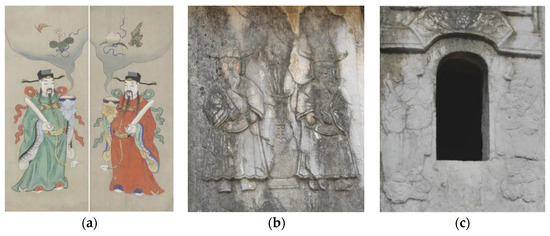
Figure 4.
(a) Prototypes for illustrations of Door Gods of Fortune and Prosperity: Taoist Shui Lu paintings, with images sourced from internet20; (b) stone carving: Door Gods of Fortune and Prosperity, Xizi Pagoda in Dongxin Village, Xintian County, Yongzhou; (c) stone carving: Door Gods of Fortune and Prosperity, Xizi Pagoda in Zhongliu Village, Guiyang County, Chenzhou.
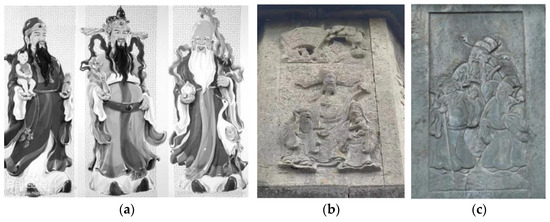
Figure 5.
(a) Prototypes for illustrations of Three Stars of Fortune, Prosperity, and Longevity, with images sourced from internet21; (b) stone carving: Three Celestial Stars, Xizi Pagoda in Tangjia Village, Xintian County, Yongzhou; (c) stone carving: Three Stars of Fortune, Prosperity, and Longevity, Xizi Pagoda in Chengbu Miao Autonomous County, Shaoyang.

Figure 6.
(a) Stone carving: Carp’s Leap to Dragonhood, Xizi Pagoda in Laobaijia Village, Ningyuan County, Yongzhou; (b) stone carving: Consecutive Triumphs, Xizi Pagoda in Laobaijia Village, Ningyuan County, Yongzhou; (c) stone carving: Hidden Eight Immortals—Gourd, Xizi Pagoda in Fengzixi Village, Xintian County, Yongzhou; (d) stone carving: Hidden Eight Immortals—Treasure sword or Precious sword, Xizi Pagoda in Fengzixi Village, Xintian County, Yongzhou.
Secondly, in the pursuit of medical treatment, individuals turned to Taoist talismans and the burning of written characters to address ailments. Within Taoist doctrine, characters are believed to be imbued with supernatural mystical energies, and the burning of such paper is seen as a conduit for communication with the divine, as well as a method to obtain protection from Tianming. It is believed that the mystical forces encapsulated within the characters can be transmuted into medicinal forms through this ritualistic process, thus healing diseases (M. Wang 2010). For instance, “inscribing a Taoist symbol on a patient’s forehead is thought to cure stubborn and complex illnesses; whereas reducing written paper to ashes is regarded as an efficacious remedy for treating ailments” (M. Wang 2010).
Finally, the pursuit of childbirth, the flourishing of one’s lineage, enduring wealth, and longevity is encapsulated in texts such as Quàn Shàn Shū (劝善书)22, including The Merits and Demerits of Cherishing Characters (惜字功律), Wenchang Dijun’s Code of Merit for Cherishing Characters (文昌帝君惜字功律二十四条), Wenchang Dijun’s Exhortation to Respect (文昌帝君劝敬字纸文), and The Record of Merits and Responses from Cherishing Characters (惜字感应录). All of them clearly document blessings such as having children, the prosperity of descendants, and the attainment of wealth, all of which are believed to change one’s destiny. These texts demonstrate the power of Tianming, showing that an individual’s fate can be influenced and altered through virtuous actions. For example, The Merits and Demerits of Cherishing Characters records that “A man surnamed Wang from Hangzhou, childless at fifty, earnestly read the YinChihWen (阴鸷文)23 and vowed to establish a Paper Burning Society, setting up a furnace for the incineration of written paper... After each burning, he would collect any broken ceramics with inscriptions and bury them in clean soil. Within a few years of this practice, he was blessed with three sons. (杭城汪姓,年五十无子,读阴骘文,因至诚发愿建字纸会,立字纸炉……焚化一次,见磁器有字,俱收埋净土,行甫数年,连生三子)”.
During the Xizi worship ceremony, each phase of the ritual embodies the Taoist belief in the harmony between human endeavors and Tianming, as well as the symbiosis of nature and humanity. Historical records detail the sequence of the Xizi worship ritual as follows: Collecting Written Paper (收集字纸)→Washing with Fragrant Water (香汤洗涤)→Sifting with a Sieve (筛子过滤)→Sun-Drying and Storing (晒干存放)→Incinerating Written Paper (字纸焚烧)→Clouds of Smoke Ascending to Heaven (云烟入天)→Storing Ashes in a Jar (清灰入瓮)→Conveying Ashes to the Sea (送灰入海)24. These processes encapsulate profound Taoist philosophical concepts.
Initially, the ritual’s commencement with “Washing with Fragrant Water”25 resonates with the Taoist principle of “Water Spraying for Exorcism”, harnessing the mystical properties of water to repel malevolence and welcome the sacred (Water Official dispelling calamities26) (Xiang 1999). This act symbolizes Tianming’s protection over human endeavors. Both Qinghe Neizhuan (清河内传)27 and The Record of Merits and Responses from Cherishing Characters (惜字感应录)28 reference the following practice: “Collecting written paper, cleansing it with fragrant water, and then burning it...” (拾字纸,香汤洗涤,焚之……). The act of washing hands or bathing prior to the ritual carries a similar significance.
Secondly, “Incinerating Written Paper” and “Clouds of Smoke Ascending to Heaven” are the central elements of the worship ritual. Xizi Pagodas typically have a south-facing paper entrance (入炉口) on the ground floor, dedicated to depositing written paper for incineration, and several north-facing ash exits (排烟口) above the first floor to facilitate ventilation and smoke release (He et al. 2023). Together, these features create a channel for communication between humans and heavenly deities. The south-facing paper entrance serves as the starting point of this channel. The act of burning written paper draws inspiration from the Taoist ritual of “Offering a Memorial Prayer” (进表)29, aimed at delivering personal wishes to heavenly deities. Each piece of paper carrying a wish reflects reverence for and alignment with Tianming. The ash exit, on the other hand, is the place where the written paper turns into smoke and carries the wishes to the heavens. It symbolizes the transformation of the spirit of the characters into pure air after being burned, returning to nature. This reflects the Taoist philosophical concept that all things have a life cycle and will eventually return to nature. It embodies the operational principle of “Man follows the Earth, the Earth follows Heaven, Heaven follows the Dao, and the Dao follows ziran” (人法地,地法天,天法道,道法自然). Through field investigation, it was found that the designs of the paper entrance and ash exit of the Xizi Pagoda vary (Table 3), but both serve the practical function of facilitating the burning of written paper and the release of smoke. In addition to basic geometric shapes, the design of the ash exit also incorporates patterns such as animal heads and copper coins. These not only enhance the architectural esthetic but also embody people’s reverence for the deities, deeply reflecting the religious philosophical concept of Tianming.

Table 3.
Designs of paper entrance and ash exit of some Xizi Pagodas in Hunan Province.
Finally, the ritual of “Conveying Ashes to the Sea” completes the life cycle of the written paper, linking the paper’s life cycle with the “life force and growth power of water” (Xiang 1999). The ashes of the burned paper are sent into the sea, and through the regenerating power of water, the paper is imbued with a sense of eternal life.
After examining 38 Xizi Pagodas in Hunan Province, it was found that these Pagodas are often built in locations with well-developed water systems, at village entrances, near ancestral halls and schools, or in the center of rice fields. Among these, the locations with well-developed water systems are the most common (Figure 7). In addition to Feng Shui considerations, a major reason for this choice is the proximity to water, which facilitates the washing of written paper and the Conveying Ashes to the Sea ritual (Luo 2024).
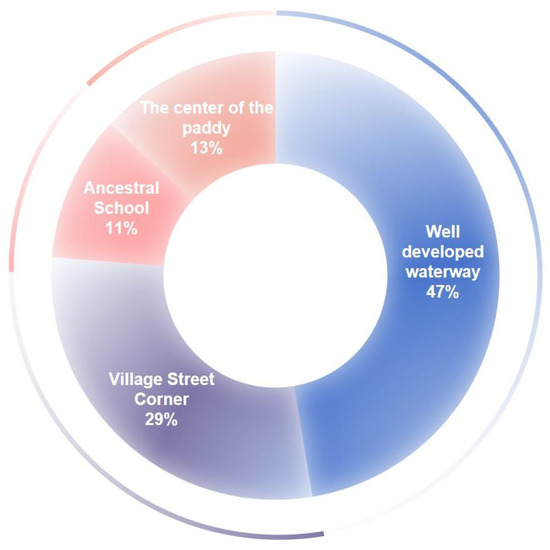
Figure 7.
Proportional distribution of Xizi Pagoda locations in Hunan Province.
The Buddhist notion of “Tianming” is intricately linked with the veneration of written characters. Esteemed Buddhist masters, including Master Ouyi (蕅益大师) (1599–1655), Master Lianchi (莲池大师) (1535–1675), Master Daoxuan (道宣大师), and Master Yinguang (印光大师) (1862–1940), all championed the respect and cherishing of written characters (Luo 2024). Among them, Master Daoxuan (道宣大师), in his work Jiao Jie Xin Xue Bi Qiu Xing Hu Lv Yi (教诫新学比丘行护律仪)31, proposed the “Toilet Etiquette”, which stipulated that monks must not use written or printed paper for personal hygiene (Zhou 2004, p. 199). He further emphasized the sacredness of written words by stating, “Characters are akin to scriptures... desecrating them leads to five hundred kalpas of suffering, often as insects in latrines” (“字与藏经同……陷身五百劫,常作厕中虫”) (Guo et al. 1990, p. 126). Master Yinguang (印光大师) mentioned, “Characters are the ultimate treasure of the world. They can transform the ordinary into the sacred, the ignorant into the wise, the poor into the prosperous, and the sick into the healthy” (字为世间至宝,能使凡者圣,愚者智,贫贱者富贵,疾病者康宁)32. It is evident that the custom of cherishing written characters is closely tied to religious beliefs and has become an integral part of religious disciplinary practices (Luo 2024). Respecting and cherishing written characters are regarded as virtuous acts that bring rewards (Sun 2006). Conversely, defiling written characters is considered a sinful act that attracts divine punishment (Sun 2006). In conclusion, “Good causes lead to good results, and bad causes lead to bad results ”(Hai 2009), which encapsulates the profound concept of “Tianming”. It emphasizes that the way one treats written characters is closely tied to their future fate. Those who respect and cherish characters will be rewarded with blessings, while those who defile them will face consequences.
In the practice of Xizi-belief, although Confucianism’s interpretation of the mandate of “Tianming” is different from that of Buddhism and Taoism, its influence is equally significant. Although Confucianism emphasizes the core concept of “valuing human affairs while downplaying heavenly destiny” (重人事,轻天命), this does not mean that Confucianism completely ignores or denies the existence of “the destiny of heaven”. In the process of promoting the development of Xizi customs, Confucianism did play an important role. Especially after the implementation of the Imperial Examination System (科举制度) in the Song Dynasty, Confucian culture became deeply ingrained in people’s hearts. It continued and consolidated the deification position of Confucius in people’s hearts. Before exams, people would choose to offer sacrifices to Confucius, seeking wisdom and academic success. This belief and practice are intricately reflected in the architecture of Xizi Pagodas. For example, the delicate carving of “Confucius Teaching (孔子讲学)” on the Xizi Pagoda in Tangjia Village, Sanqiao Town, Xintian County, and the couplet “The Sacred Emperor Reveres Confucius and Promotes Literature (圣天子崇儒右文之意)” on the Xizi Pagoda in Santang Village, Longhui County, not only highly praise Confucian culture and the sage Confucius but also reflect the inclusive nature of Xizi-belief, representing a form of cross-religious, overlapping deity worship.
3.2. Important Embodiment of Tianli’s Theory in Xizi-Belief
The “Tianli” concept in the belief of cherishing characters is deeply influenced by the cultural thoughts arising from the integration of Confucianism, Taoism, and Buddhism. It reflects a kind of moral and behavioral discipline that imposes a deterrent force. Confucianism focuses on ethics and morality and Taoism emphasizes harmony between humans, nature, and the universe, while Buddhism advocates for the liberation of all sentient beings, as expressed in the Boddhisattva vow. In this context, heaven is viewed as the enforcer of moral principles and natural laws, educating people in ethical and moral conduct. Within this framework, Xizi-belief replaces the secular view of “Tianming” with a more moralized concept of “Tianli” (Liang 2015), highlighting the moral- and truth-based educational function underlying the practice.
From the Confucian perspective, the “view of Tianli” in the practice of cherishing words is primarily manifested in the respect for knowledge and the cultivation of values. Xizi-belief emphasizes the protection and transmission of knowledge through the practice of cherishing papers with characters, which aligns closely with the Confucian tradition of revering script, respecting culture, and honoring knowledge (Tan et al. 2021, pp. 171–75). Treating written papers, books, and documents with respect and prohibiting their casual tearing or destruction is not only an important manifestation of Confucian etiquette but also a direct reflection of reverence for Tianli. In addition, Confucian thought emphasizes the cultivation of personal character, and cherishing words and respecting knowledge are important means to cultivate reverence and humility. As important vehicles for admonition and moral education, Xizi Pagodas are strategically located in places frequently passed by or visited by people. The inscription plaques and couplets carved at the furnace entrances of Pagodas (Table 4) use written words to pass down the wisdom of sages, educating people on “Reverence for the Holy (尊圣)”, the “Exaltation of Literature (崇文)”, the “Veneration of the Written Word (敬字)”, and “Pleasure in Learning (乐学)”, thereby achieving the goal of “cultivating oneself, regulating the family, governing the country, and bringing peace to the world (修身齐家治国平天下)”. Among them, “Reverence for the Holy” emphasizes respect and admiration for sages and teachers, the “Exaltation of Literature” stresses the importance of preserving and promoting Confucian culture through the written word, the “Veneration of the Written Word” reflects a deep reverence for text, and “Pleasure in Learning” represents a passionate pursuit of knowledge and culture. Together, these values form the core of Confucian “Tianli” thought, showcasing its profound influence on personal growth and the harmonious order of society.

Table 4.
Inscriptions on Xizi Pagodas in various parts of Hunan Province.
As engraved on the Xizi Pagoda in Yijiatian Village, Shaoyang City, “The value of culture and civilization should not be lost or disappear, while the principles and the tools or methods to achieve them will always remain” (斯文宜未坠,道器自常存); the term “Si Wen (斯文)” refers to culture, and “Si Wen Yi Wei Zhui (斯文宜未坠)” emphasizes the importance of preserving culture and preventing its decline or loss. At the same time, “Tao (道)” in Confucian thought represents abstract moral principles, while “Qi (器)” symbolizes concrete tools or means. The coexistence of these two elements implies that all things in the world are part of the cosmic order, reflecting an ecological philosophical concept of the harmonious coexistence between humans and nature.
“Tianli” in Taoist and Buddhist philosophy is similarly expressed in cultural terms; both see the act of cherishing written characters as a manifestation of good deeds and moral accumulation. This view incorporates the concept of karma and advocates for the respect and preservation of written characters as a moral standard. As Master Lianchi mentioned, “Collecting discarded written papers for incineration, one hundred characters count as one good deed. Discarding written papers without care, ten characters count as one fault!” (Hong Zhu 2011, p. 250). In The True Essence of Cherishing Characters (惜字真宗), it is mentioned that “Creating a Cherishing Characters Furnace is good for the same purpose, and asking others to collect the written characters is also a merit ” (Du 1906, pp. 11–12). In order to strengthen the concept of cherishing written characters, many books appeared during the Ming and Qing dynasties, such as the Treatise of the Most Exalted One on Cause and Effect (太上感应篇), Wenchang Dijun’s Yin Chih Wen (文昌帝君阴骘文), Wenchang Dijun’s Code of Merit for Cherishing Characters (文昌帝君惜字功律), the New Compilation on Cherishing Characters (惜字新编), and Regulations on Cherishing Characters (惜字律), as well as other works like A Ladder to Fame (青云梯) and The Cassia Palace Ladder (桂宫梯). These texts guided people to revere the way of heaven, cherish written characters, and accumulate virtue through good deeds. In the Wenchang Dijun’s Code of Merit for Cherishing Characters (文昌帝君惜字功律), it is recorded that “If one collects and burns written papers with fragrant water, one will gain ten thousand merits and increase one’s lifespan by a decade, enjoying wealth and honor for a long time, with descendants prospering (“平生遍拾字纸至家,香水浴焚者。万功,增寿一纪。长享富贵。子孙荣贵”)”. Furthermore, it advises people to cherish written characters and to burn books that are “strange, obscene, or immoral”, stating that performing so will earn one a hundred merits, leading to an extended life and the prosperity of descendants (“劝世人惜字。并焚怪异淫乱等书者。百功。本身增寿。子孙昌盛”). Cherishing written characters is regarded as the highest virtue, with Wenchang Dijun placing it at the top of all merits (万功之首), which can bring longevity, wealth, and the honor of one’s descendants.
3.3. The Differences Between the Concepts of Tianming and Tianli in Xizi-Belief
By analyzing the specific manifestations of Tianming and Tianli in the above Xizi-belief, we learn that the the notions of Tianming and Tianli have profoundly shaped the folk customs surrounding the veneration of written characters, imbuing them with distinct religious undertones from Confucianism, Taoism, and Buddhism. The divergence primarily lies in how these religious traditions orient belief in revering script.
First and foremost, Taoist philosophical tenets wield considerable influence over the belief in cherishing written words, with Tianming and Tianli embodying disparate emphases. Tianming is heavily steeped in Taoist mythology, wherein adherents aspire to immortality by adhering to Tao and invoking the assistance of deities. These deities are perceived to fulfill mundane desires and societal needs, such as academic success, healing ailments, and ensuring familial prosperity, thereby highlighting the secular facet of Tianming. Conversely, Tianli is more influenced by Taoist perspectives on karmic retribution, where moral texts exhort individuals to accrue merit through virtuous deeds. Revering and cherishing written words is deemed a means to accumulate virtue and garner blessings, while neglecting this duty results in punishment, thereby encapsulating the moralizing dimension of Tianli.
Secondly, Confucian cultural ideals also accentuate differing aspects within Tianming and Tianli. Confucianism’s focus aligns more closely with Tianli, which governs ethical and moral instruction, whereas Tianming emphasizes the veneration of Confucius as a divine entity. Devotees pray to Confucius to fulfill their aspirations for wisdom and scholarly accomplishment, perceiving him as a spiritual intermediary.
Lastly, Buddhist cultural tenets exhibit less differentiation between the two concepts, as both Tianming and Tianli in Buddhism center on the law of karmic retribution. Rewards and punishments are bestowed according to one’s virtuous or vicious actions. Those who exhibit reverence receive blessings, while those who display disrespect face consequences.
The concepts of Tianming and Tianli unveil profound philosophical disparities when examining the “nexus between Heaven and humanity”. Tianming, as a religious invocation, embodies humanity’s profound prayers and dependence on divine forces. Through rituals such as sacrifices and the veneration of written words, individuals seek secular blessings and alterations in their fate from supernatural entities. In contrast, Tianli is imbued with a greater essence of moral philosophy and cosmology. It underscores deities or cosmic laws as the architects and overseers of moral norms, mandating that humans cultivate inner morality and engage in external behavioral practices to attain harmony with nature and the cosmic order. In this progression, Tianming metamorphoses into Tianli, where the religious attribute of “Tian” as a personified deity, the “Tian of Personality”, diminishes, transforming into a metaphysical moral law, the “Tian of Righteous Principle.” Against this backdrop, individuals endeavor to comprehend and grasp Tianli by revering the moral order of heaven, adhering to the natural way, and respecting nature, ultimately attaining a state of unity between heaven and humanity.
Tianming and Tianli concepts regulate the rituals associated with the veneration of written characters in disparate manners. From a ritualistic vantage point, Tianming is founded upon a system of sacrifices. Individuals present offerings to deities such as Cangjie, Wenchang Dijun, and Confucius, seeking blessings and reinforcing their heavenly mandate. This approach accentuates divine guidance and intervention in human conduct. Particularly for scholars preparing for imperial examinations, they would visit sites such as a Xizi Pagoda, a Xizi Furnace, or the Confucius Temple to burn written paper, demonstrating reverence for heaven and cherishing the written characters. Candidates would often bathe, change attire, and burn incense to prepare their minds and bodies, symbolizing respect for Tianming and the sanctity of written characters.
In contrast, within the Tianli framework, the regulation of individuals is more concentrated on moral instruction at the spiritual level. It hinges on the comprehension and practice of Tianli, where the accumulation of “small virtues” leads to “great morality”. It commences with the quotidian act of cherishing written characters, and through self-cultivation, adhering to moral principles, and natural laws, one can attain personal moral perfection.
3.4. Common Points Between the Concept of “Tianming” and “Tianli” in Xizi-Belief
In the belief of cherishing written words, the concepts of “Tianming” and “Tianli” are deeply intertwined with Confucian, Buddhist, and Taoist philosophical thoughts, carrying a strong religious and philosophical connotation. Confucianism emphasizes reverence and respect for written words, viewing them as crucial carriers of “Tianming” and “Tianli”, believing that by cherishing written words, one can align with the will of heaven and follow natural laws, ultimately achieving the goal of “cultivating oneself, managing the family, governing the country, and bringing peace to the world” (修身齐家治国平天下). At the same time, Buddhism and Taoism also play significant roles in the belief of cherishing written characters. Buddhism interprets the importance of cherishing written characters through the doctrine of karma and retribution, while Taoism emphasizes harmonizing with nature and pursuing the Daoist realm to reflect respect for and reverence toward written characters. These ideas are interwoven, making the belief in cherishing written characters not only an act of reverence and protection for written language but also a profound understanding and pursuit of the cosmic order, moral laws, and the meaning of life.
Whether it be Tianming or Tianli, both are profoundly entrenched in an exalted reverence for “Tian”, regarded as the supreme sovereign of the cosmos, endowed with the power to intercede in human affairs and dictate the harmony of society. In both these philosophies, written characters are held in equal esteem as “Tian”. Cherishing written characters is, in essence, a profound expression of awe and worship toward “Tian”. Tianming believes that written characters contain the revelations of Tianming and are a direct manifestation of divine will. Followers understand Tianming and communicate with the divine by studying these writings. In contrast, Tianli sees written characters as carriers of moral laws and natural principles, with followers striving to enhance their moral cultivation in order to comprehend and follow the truths established by “Tian”. Although their paths may differ, both concepts form a bridge of communication between humanity and “Tian” (or the divine) and the cosmic truths of the universe. They both emphasize the central role of morality in individual cultivation and social harmony. The ultimate goal is to nurture virtuous character through cherishing written words, thereby preserving and promoting traditional Chinese virtues and achieving harmonious coexistence between humanity and “Tian”.
4. Discussion and Conclusion
4.1. Discussion: Three Models of the Influence of Tianli and Tianming on Xizi-Belief
The development of Xizi-belief integrated Tianming and Tianli from Confucian, Buddhist, and Taoist religious philosophies, profoundly influencing the concept of cherishing characters, folk rituals, and architectural art. Religious belief serves as a cultural symbolic system through which humans interpret the surrounding world and position individual behavior (Geertz 1973). Similarly, schema theory suggests that cultural schemas are symbolic models constructed based on people’s cultural concepts (Tran et al. 2024, p. 106), divided into three types: world schema, text schema, and language schema (Cook 1994). As a form of a folk religious symbolic system, Xizi-belief aligns with the definition of cultural schema. This study, combining the aforementioned theoretical models, scientifically categorizes the influence of Tianli and Tianming on Xizi-belief and finds that their impact aligns with the three types of schema in cultural schema theory. These can be summarized into three modes: the religious philosophy integration model, the ritual practice model, and the architectural embodiment model (Table 5).

Table 5.
Three modes of influence of Tianming and Tianli on Xizi-belief.
The religious philosophy integration model reveals the profound ideological connotations of Xizi-belief (Table 6). This model aligns with the concept of the world schema, which serves as the foundational worldview of Xizi-belief. The concept of Tianming is more influenced by Daoist and Buddhist philosophies, arising from the reverence for the supernatural power of characters, emphasizing the primary role of “Tian” as a causal force. It is a theory based on karma or cause and effect (因果论). On the other hand, the concept of Tianli is more reflective of Confucian philosophical values, emphasizing the role of the individual in moral cultivation. Through the act of cherishing characters, one aligns with Tianli to improve moral character and achieve harmony among humans and Tian, humans and gods, and humans and society. This is a moral theory. Similarly, based on the philosophy of life, religious structures can be divided into Religion and Religiosität (Simmel 2003, pp. 48–49). In this structure, the concept of Tianming belongs to Religiosität, determining what society believes in: it is the innate nature of the soul and a social spiritual structure (Tian 2011). The concept of Tianli, on the other hand, belongs to Religion, governing the moral guidelines of a faith-based society and providing external forms of religious expression. These two religious structures intertwine within Xizi-belief, connecting the sacred world (神圣世界) and the secular world (世俗世界), collectively constituting the core philosophy of this belief system.

Table 6.
Manifestations of Tianming and Tianli in the religious philosophy of Xizi-belief.
The ritual practice model is an important manifestation of Xizi-belief in daily life. It not only demonstrates how “Tianming” and “Tianli” interact in rituals but also strengthens faith practices and deepens believers’ identification with the belief system through a series of ritual actions. This model corresponds to the concept of the text schema and forms the ritual texts of Xizi-belief. According to Turner’s theory of rituals, the Xizi Ceremony can be seen as a form of social drama (社会戏剧), consisting of three stages: separation, liminality, and aggregation (V. Turner 2006, p. 95). Analyzing the Xizi Ceremony reveals that each phase of the social drama corresponds to different parts of the Xizi ritual. The separation phase marks the departure of believers from their everyday state, where they symbolically disconnect from the secular world through preparation and purification rituals, thus preparing to receive the guidance of Tianming. Liminality is the critical moment when believers communicate with Tianming. In this phase, believers, through sacrifice and prayer, merge their personal desires with their worldview, symbolizing the fusion of spiritual characteristics and their worldview. The aggregation phase represents the process of incorporating the moral insights and social responsibilities gained during the ritual back into daily life, marking the transition from the sacred domain to secular life, while also affirming one’s social identity.
It can be seen that the Xizi Ceremony determines the emotional, cognitive, and spiritual transformation of participants. The interactions and experiences during the Xizi Ceremony help believers understand their roles in social structure and anchor their own social position. Through this, the practice of the Xizi Ceremony deepens people’s dependence on and identification with the belief system. The moral implications embedded in the ritual stages promote the elevation of social moral standards, reflecting the profound impact of Xizi-belief on both individual and societal levels (Table 7).

Table 7.
The manifestation of Tianming and Tianli in the ritual stages of Xizi-belief.
The architectural embodiment model, based on the religious philosophy integration model and the ritual practice model, explores the specific manifestation of Tianming and Tianli in Xizi-belief from the perspective of architecture itself (Table 8). This model aligns with the concept of language schema and represents the symbolic language expression of Xizi-belief. Analysis shows that under the influence of Tianming, Xizi buildings are often located in well-developed water systems or auspicious sites, with Feng Shui serving as an implicit symbolic language that expresses reverence for and prayers to Tianming carried by the written word. Guided by Tianli, Xizi buildings use inscriptions and patterns to display the wisdom of sages. As a visual symbolic language, decoration enacts the social discipline and inheritance of moral values such as “Reverence for the Holy”, the “Exaltation of Literature”, the “Veneration of the Written Word”, and “Pleasure in Learning”. Xizi buildings, in this case, not only serve a practical function but also become the material carrier of Xizi-belief and the tangible medium for the inheritance and development of scholarly culture.

Table 8.
Manifestations of Tianming and Tianli in architectural art within Xizi-belief.
4.2. Conclusion: The Positive Role and Value Regeneration of Xizi-Belief’s Religious Philosophy from a Modern Perspective
Tianming and Tianli, as essential elements of the “Tian” philosophy, exert positive influences within the Xizi-belief system. Tianming underscores the divine authority inherent in characters, fostering reverence for the sanctity of written language. Conversely, Tianli cultivates moral virtue through Xizi practices, disseminating ethical principles of benevolence and righteousness. In contemporary society, the expansion of rationality and the development of public spheres often create a schism between tradition and modernity (Habermas 1999, pp. 40–42), leaving individuals adrift concerning behavioral norms. Within this context, Tianli and Tianming, embedded in Xizi-belief as components of cultural tradition, offer individuals moral guidance and a framework, providing a sense of stability and continuity amidst the unpredictability of a fluid world (Bauman 2017, p. 98).
In the digital age, despite the diminishing use of physical text, the veneration for characters motivates individuals to uphold politeness and respect in virtual communication realms, such as the internet. This contributes to the establishment of a more stable, cohesive, and harmonious social milieu. Furthermore, the manifestation of faith within the public sphere serves as a means for communication and understanding, fostering interaction, and consensus among societal members (Habermas 1999, pp. 108–11). In the modern milieu, Xizi transcends the mere cherishing of characters; it functions as a conduit for disseminating ethical values, enhancing public morality and social responsibility. The interaction between Tianming and Tianli encourages individuals to sustain reverence and respect for tradition amidst rapid societal progression. This synergy rejuvenates and perpetuates the traditional Xizi-belief in contemporary society, constituting a valuable resource that bridges tradition and modernity, fosters cultural diversity and sustainable development, and propels moral and cultural advancement.
This study corroborates the distinct modes of influence that Tianming and Tianli exert on the formation of Xizi-belief. Tianming centers on a causal nexus, whereas Tianli emphasizes moral norms. The analysis is not confined to the Xizi Pagoda field case but also delves into the philosophical ontology and religious implications of Xizi-belief. Employing theoretical models and qualitative field methods, this interdisciplinary analysis connects Tian philosophy with Xizi-belief and architecture. The influence of Tianming and Tianli on Xizi-belief is categorized into three models: the religious–philosophical integration model, the ritual practice model, and the architectural embodiment model. These findings contribute to validating the impact of philosophical perspectives on the evolution of religious belief systems and offer novel insights into the study of religious philosophy and ritual landscapes.
Undeniably, while Xizi-belief exerts a significant positive influence on modern society, Xizi culture is gradually fading from collective memory, resulting in the decline of sacrificial ceremonies and the deterioration of Xizi buildings. This study endeavors to enrich the research on Xizi-belief and its philosophical implications, thereby promoting the cultural value of this belief system. Nonetheless, constraints related to time and the depth of knowledge limit the scope of this study. For instance, a comprehensive analysis of Xizi-belief in the Hunan region remains inadequate, and the cultural transmission based on current Xizi practices necessitates further exploration and refinement. The authors anticipate that this study will provide a scientific and theoretical foundation for the preservation and inheritance of Xizi-belief, an integral aspect of Chinese traditional faith and exceptional national culture.
Author Contributions
Conceptualization, X.X.; methodology, X.Z. and L.L.; software, X.Z. and L.L.; validation, L.L.; formal analysis, X.Z. and L.L.; investigation, L.L. and X.Z.; resources, X.X.; data curation, X.Z. and L.L.; writing—original draft preparation, L.L. and X.Z.; writing—review and editing, L.L. and X.Z.; visualization, X.Z. and L.L.; supervision, X.X.; project administration, X.X.; funding acquisition, X.X. All authors have read and agreed to the published version of the manuscript.
Funding
This research was funded by [Late Subsidised Project of National Social Science Foundation of China: Research on the Aesthetic Generation of Landscape in Hunan Traditional Villages] grant number [23FZWA017].
Institutional Review Board Statement
Not applicable.
Informed Consent Statement
Not applicable.
Data Availability Statement
All the data in this study are included in the article and are derived exclusively from our field investigations. Further inquiries can be directed to the corresponding author.
Conflicts of Interest
The authors declare no conflicts of interest.
Notes
| 1 | Feng Youlan divided “Tian” into five different meanings: the heaven of matter, the heaven of domination, the heaven of destiny, the heaven of nature, and the heaven of righteousness. The philosophy of “Tian” is rooted in the cultural soil of the Chinese nation, influencing social lifestyles and individual thinking patterns. For details, see Feng Youlan’s History of Chinese Philosophy (I). |
| 2 | The concept of “Tianli” here refers to “heavenly principles”, which are unchanging moral laws in the universe and are realized through human virtues. |
| 3 | Tian determines blessings and misfortunes based on a person’s good and evil deeds. |
| 4 | The fate and consequences of an individual are determined by the will of Tian. |
| 5 | The core of Taoist philosophy is “effortless action (无为)”, which advocates an attitude in life of conforming to nature and governing by inaction, pursuing harmonious coexistence between individuals and the universe (Gao 2024, Issue 13). |
| 6 | The concept of “the Tianming is called nature (天命之谓性)” comes from the book Liji’·Zhongyong (礼记·中庸), which states that the “heavenly mandate is called nature, free will is called Tao, and cultivating Tao is called teaching”. This means that following human nature endowed by the heavenly mandate is to follow the heavenly mandate, and following the heavenly mandate and improving moral cultivation is to achieve education; derived from Zou (2020, p. 40). |
| 7 | Kuixing (魁星): the god in charge of good or bad articles in Taoist mythology is the great lucky star that dominates the cultural movement in the world, corresponding to the first Tianshu star or the general name of the first four stars in the constellation of the Dipper. |
| 8 | Divine Mythology (神灵神话) tells the stories of the primordial True Saints, including natural deities, the gods within the human body, and figures such as San Qing Si Yu (三清四御) in Taoism. It embodies the idea that all things possess a spirit, reflecting a worldview in which everything in the universe is animated by spiritual essence (Tan 2009). |
| 9 | Taoist mythology (道教神话) is primarily divided into three major categories: Taoist Fairyland Mythology, Divine Mythology, and Immortal Mythology. |
| 10 | San Yuan Da Di (三元大帝) refers to the three gods in charge of the three realms of heaven, Earth, and water in Taoism. They are also known as the three great emperors, including heaven, Earth, and water officials, who are responsible for blessing, forgiveness, and reconciliation. |
| 11 | The Eight Immortals (暗八仙): The Eight Immortals finally become immortals through their own cultivation. Their magic weapons contain magical power and meaning. For example, the gourd of Li Tieguai symbolizes fortune and exorcism, while Lv Dongbin’s sword symbolizes killing demons and protecting all living creatures. The dark Eight Immortals refer to the patterns of magic instruments held by the Eight Immortals. This is a common auspicious sculpture in China. Because the magic instruments refer to immortals, they are called the dark Eight Immortals. |
| 12 | Consecutive Triumphs (一路连科) is a phrase that originated in the imperial examination era of China. It is a blessing for those preparing for or participating in the imperial exams, symbolizing continuous success and victory. The phrase is derived from wordplay involving homophones: “鹭” (heron) sounds similar to “路” (road), and “莲” (lotus) sounds like “连” (continuous). Thus, “一路连科” carries the wish for candidates to succeed in a series of exams, one after another, achieving unbroken success. |
| 13 | The Carp’s Leap to Dragonhood (鲤鱼跃龙门) is a legend that states that if a carp can leap over the Dragon Gate, it will transform into a true dragon. This is used as a metaphor for the spirit of hard work, determination, and ambition. After the implementation of the imperial examination system, the phrase “Carp’s Leap over the Dragon Gate” was used to symbolize success in the imperial exams. |
| 14 | Immortal Mythology (神仙神话) refers to stories of mortals who attain immortality through cultivation. In these narratives, the protagonists are typically ordinary humans who, through continuous cultivation and enlightenment, gradually transcend the human condition of emotions, desires, and the cycle of birth, aging, sickness, and death. As a result, they acquire miraculous abilities, such as the power of flight and transformation (Tan 2009). |
| 15 | Kuixing Dian Dou (魁星点斗) refers to an ancient legend where the deity Kuixing uses a brush to point out the names of successful candidates in the imperial examination, symbolizing being the top scorer and achieving the title of “Zhuangyuan” (the highest honor in the imperial exam). |
| 16 | The Door Gods of Fortune and Prosperity (福禄门神) are deities in Chinese folk belief that protect the household. They are typically affixed to doors during the Chinese New Year to ward off evil spirits and bring good luck and prosperity. “Fu” (福) represents happiness and good fortune, while “Lu” (禄) symbolizes wealth and status. |
| 17 | The Heavenly Official (天官) is one of the gods in Chinese mythology, responsible for blessing the world. This phrase means that the Heavenly Official bestows blessings and good luck on people and usually prays for the Heavenly Official’s blessing in the new year or on special occasions. |
| 18 | The Three Stars of Fortune, Prosperity, and Longevity (福禄寿三星) are three auspicious gods in Chinese folk beliefs, representing happiness (Fortune), wealth (Prosperity) and longevity (Longevity). Their images often appear in traditional decoration, symbolizing people’s yearning for a better life. |
| 19 | The image is from a website: netease subscription, [have art realm—have art thought] “Ancient college entrance exams, worshiping the right god is very important”. |
| 20 | The image is from the official microblogging site of the Palace Museum. |
| 21 | The image is from intu.com: Fortune and Longevity Three-Star picture, traditional culture, and art design gallery. |
| 22 | Quàn Shàn Shū (劝善书): this is a type of letter or essay that encourages people to do good deeds, cultivate personal morality, and pursue virtuous behavior and good conduct. |
| 23 | The word “阴骘” originally came from the ancient book Shangshu Hongfan《尚书·洪范》. It refers to the rewards and punishments that heaven does not announce but uses to secretly supervise people’s good and evil behaviors. The scholars Daisaku Suzuki and Paul Carus chose “YinChihWen” as the English translation of “阴鸷文”. It not only retains the cultural connotation of the original text but also tries to be concise for overseas readers to understand; from https://www.amazon.com/Yin-Chih-Wen-Extracts-Commentary/dp/1013766555 (accessed on 29 December 2024). |
| 24 | The complete process of the sacrificial ceremony in the Kamalan Hall (now Yilan) region of Taiwan is clearly documented: “The discarded characters are collected together, then washed with Fragrant Water. Next, the water is filtered through a sieve to prevent any characters from being missed or falling out. After sun-drying, the characters are placed in a tower for storage, and once a certain amount is accumulated, they are burned. After the incineration, the ashes left in the tower are scooped out with a wooden spoon and placed into a jar, or sometimes into a wooden box. The ashes are then transported by boat to the sea or the center of a river, where the ritual of ‘sending paper ash into the sea’ is performed, waiting for the ashes to slowly submerge. The entire ceremony is conducted with great solemnity and sanctity, requiring scholars to be properly dressed, accompanied by the sound of drums and wind instruments along the way, until the sacred trail disappears from sight, marking the completion of the ritual” (Shu and Yang 2023). |
| 25 | Water Spraying for Exorcism (喷水驱邪), also known as 噀水 (Chuan Shui), is a Taoist exorcism ritual that uses water to drive away evil forces or inauspicious energies. The act of spraying water is believed to cleanse the environment and protect individuals or spaces from negative influences. |
| 26 | Water Official dispelling calamities (水官解厄): The Water Official is one of the three revered deities in Taoism (along with the Heavenly Official and Earthly Official). In Taoist belief, the Water Official Emperor descends to the human world on the 15th day of the 10th lunar month, specifically to relieve the calamities and hardships of virtuous people, dispelling disasters and alleviating difficulties. |
| 27 | The Qinghe Nei Zhuan (清河内传) is a Taoist text from the Ming Dynasty, attributed to the legendary Emperor Wen Chang, who is said to have narrated his own life story. The work blends historical events with mythology, advocating for virtues such as loyalty, filial piety, integrity, and the transmission of ancestral moral values through virtuous deeds. |
| 28 | The Record of Merits and Responses from Cherishing Characters (惜字感应录) is a book that compiles numerous rules, admonitions, and case studies related to the practice of cherishing characters, with the aim of encouraging people to respect culture and treasure words. |
| 29 | Offering a Memorial Prayer (进表): Taoism believes that by Offering a Memorial Prayer, the writing in the prayers of believers can be sent to the heaven, and saints can come to the altar to worship, bless, and prolong age and receive the blessings of ancestors. |
| 30 | Gui (圭) is ancient Chinese ritual ware, which refers to flake jade ware with a sharp upper part and a straight lower end. The gui shape adopts the shape of this ritual vessel, which is a unique shape in ancient Chinese architecture. |
| 31 | Jiao Jie Xin Xue Bi Qiu Xing Hu Lv Yi (教诫新学比丘行护律仪) is a book written by the Tang Dynasty monk Daoxuan. It specifically records norms and guidance for the behavior, daily life, and rituals of bhikkhus (Buddhist monks) in training. |
| 32 | Zengguang Wen Chao Vol. 2, Wan Hui Jie Yun Hu Guo Jiu Min Zheng Ben Qing Yuan Lun. |
| 33 | Niu Dou (牛斗) are tools used in ancient sacrificial rites shaped like ox horns. |
| 34 | Dian Xue (点雪) symbolizes the reverence of the ancients for words. It is as pure and flawless as a snowflake and needs to be carefully protected and cherished. At the same time, it implies that knowledge is precious and short-lived. Like snowflakes, it is beautiful but perishable and needs to be cherished and inherited in time. |
| 35 | Rong Jing (镕经) refers to the fusion and refinement of classical literature or knowledge to form a new understanding or system. |
| 36 | Wen Kui (文魁) refers to Wenxing (文星) and Kuixing (魁星). It is also used to refer to an outstanding person in the field of literature to express praise and admiration for literary talent or excellent results in the imperial examination. |
| 37 | The architectural design of Xizi Pagodas typically features odd-numbered layers, such as one, three, or five levels. |
| 38 | The architectural floor plan of Xizi Pagodas typically features even-numbered geometric shapes, such as quadrilaterals, hexagons, or octagons. |
| 39 | The Chinese mythological story describes the Eight Immortals of Taoism, each using their own magical treasures to communicate with gods across the sea. Later, this story was also used as a metaphor for individuals who excel in their own unique ways, each demonstrating their special abilities. |
References
- Bauman, Zygmunt. 2017. Liquid Modernity 流动的现代性. Translated by Ouyang Jinggen 欧阳景根. Beijing: China Renmin University Press, p. 98. [Google Scholar]
- Chen, Fang 陈芳, and Xiaodong Liu 刘晓冬. 2014. A Brief Discussion on the Character Library Pagoda: Starting from the Qing Dynasty Character Library Pagoda in the Collection of Chengdu Wuhou Temple Museum 字库塔小议——从成都武侯祠博物馆馆藏清代字库塔说起. Chinese Culture Forum 8: 51–57. [Google Scholar]
- Cook, Guy. 1994. Discourse and literature. Oxford: Oxford University Press, p. 201. [Google Scholar]
- Dang, Shengyuan. 2021. Study on the Concept of Sacredness of Pre-Qin Writing 先秦“书写”神圣性观念研究. Social Science Front 3: 176–84. [Google Scholar]
- Du, Jiafu 杜家福. 1906. Xizi Zhengzong 惜字正宗, Reprinted in the 32nd year of the Guangxu era.
- Editorial Department of Literature, History and Philosophy 文史哲编辑部. 2011. Confucianism: History, Thoughts and beliefs 儒学:历史、思想与信仰. Beijing: Commercial Press, p. 15. [Google Scholar]
- Gao, Liming 高黎明. 2024. Research on the Thought of Destiny in Confucian Philosophy 儒家哲学中的天命思想研究. Philosophical Progress 13: 2449–53. [Google Scholar]
- Geertz, Clifford. 1973. The Interpretation of Cultures. New York: Basic Books, p. 87. [Google Scholar]
- Guo, Zaiyi 郭在贻, Puquan Zhang 张浦泉, and Zheng Huang 黄征. 1990. Dunhuang Bianwen Ji Jiao Yi 敦煌变文集校议. Changsha: Yuelu Press. [Google Scholar]
- Habermas, Jürgen. 1999. The Structural Transformation of the Public Sphere. Translated by Weidong Cao, Xiaojue Wang, Beicheng Liu, and Weijie Song. Shanghai: Xuelin Press, pp. 40–42, 108–111. [Google Scholar]
- Hai, Hui 海慧. 2009. An Exploration of Monk Xuyun’s Thought on the Pure Land on Earth 虚云和尚人间净土思想探微. Fa Yin 11: 26–35. [Google Scholar]
- He, Ning 何宁. 1998. Huainanzi Jishi 淮南子集释. Beijing: Zhonghua Book Company, p. 571. [Google Scholar]
- He, Yiwen, He Lai, Zhou Qixuan, and Xubin Xie. 2024. Study on the Religious and Philosophical Thoughts of Xizi Pagodas in Hunan Province of China. Religions 15: 866. [Google Scholar] [CrossRef]
- He, Yiwen, Xuemin Zhang, Xinlei Chen, Dong Fu, Bei Zhang, and Xubin Xie. 2023. Study on the Protection of the Spatial Structure and Artistic Value of the Architectural Heritage Xizi Pagoda in Hunan Province of China. Sustainability 15: 8352. [Google Scholar] [CrossRef]
- Jiang, Sheng 姜生. 2023. The Study of Emperor Shi of Han: The Origin of Emperor’s Power and Celestial Teacher’s Teaching Power 汉始皇帝考——天子君权与天师教权之源. Wen Zhe 3: 57–95. [Google Scholar]
- Li, Na 李娜. 2011. A Study on the Folk Belief in Cherishing Characters in the Qing Dynasty and the Republic of China 清代、民国民间惜字信仰研究. Master’s thesis, Huazhong Normal University, Wuhan, China. [Google Scholar]
- Liang, Shan 梁珊. 2015. On the Present Significance of Cheng-Zhu Theory 论程朱理学的现世意义. Times Report 3: 263. [Google Scholar]
- Luo, Yuhui 罗用会. 2024. Zunyi Area Zikuta Survey and Research遵义地区字库塔调查研究. Master’s thesis, Guizhou University of Nationalities, Guiyang, China. [Google Scholar]
- Peng, Yongjie 彭永捷. 2018. A Brief Introduction to the Political Philosophy of Confucianism’s Heavenly Way: A Discussion on the Scientificity of Confucianism 儒家天道政治哲学发微——兼论儒学的科学性. Exploration and Controversy 5: 117–22+144. [Google Scholar]
- Qiao, Qingju 乔清举. 2011. On the Chronological View of the Heavenly Way in Confucian Natural Philosophy and Its Ecological Significance: Centered on the Book of Changes 论儒家自然哲学的天道时序观及其生态意义——以《易传》为中心. Zhouyi Research 周易研究 5: 48–56. [Google Scholar]
- Qin, Yongzhou 秦永洲. 2008. History of Chinese Social Customs 中国社会风俗史. Jinan: Shandong People’s Publishing House, p. 319. [Google Scholar]
- Sang, Liangzhi 桑良至. 1996. The worship of information in ancient China: Cherishing the calligraphy forest, picking up calligraphy monks, and Dunhuang grottoes 中国古代的信息崇拜——惜字林、拾字僧与敦煌石窟. Journal of Peking University 3: 81–86. [Google Scholar]
- Shu, Ying, and Luo Yang. 2023. Word Stock Tower in Chongqing’s Countryside: The Guardianship of Ploughing and Reading Culture 巴渝乡村字库塔:耕读文化的守望. City Geography 城市地理 11: 56–63. [Google Scholar]
- Simmel, Georg. 2003. The Stranger and Other Essays. In Modern Man and Religion 现代人与宗教. Translated by Wei Dong Cao 曹卫东. Beijing: China Renmin University Press, pp. 48–49. [Google Scholar]
- Song, Lian 宋濂. 2014. The Complete Works of Song Lian 宋濂全集. Beijing: People’s Literature Publishing House, p. 633. [Google Scholar]
- Sun, Rong Lei 孙荣耒. 2006. The custom of honoring characters paper and its cultural significance 敬惜字纸的习俗及其文化意义. Folklore Research 2: 166–74. [Google Scholar]
- Tan, Dandan 檀丹丹, Huifang Liu 刘辉芳, and Lin Liu 刘琳. 2021. Analysis of the Architectural Culture of Xizi Pagoda in Hunan Province under Local Environment and Architectural Form 风土环境与建筑形态下湖南省惜字塔建筑文化分析. Urban Architecture 18: 171–75. [Google Scholar]
- Tan, Min. 2009. Historical and Cultural Characteristics of Taoist Mythology 道教神话的历史文化特征. Journal of Southwest University for Nationalities 西南民族大学学报 (人文社科版) 30: 184–87. [Google Scholar]
- Tian, Wei 田薇. 2011. Simmel’s View of Religion Centered on ‘Religiosity’ 西美尔以“宗教性”为轴心的宗教观. Journal of Renmin University of China 5: 143–48. [Google Scholar]
- Tran, Thi Phuong, Tan Hoang Phan, and Nhu Vo Tam Nguyen. 2024. Cultural schemas and folk-belief: An insight into the belief in worshiping the Mother Goddess in Vietnam. Humanities and Social Sciences Communications 11: 106. [Google Scholar] [CrossRef]
- Turner, Kevin J. 2023. Rethinking the Mengzi’s Concept of Tian 天. Religions 14: 1015. [Google Scholar] [CrossRef]
- Turner, Victor. 2006. The Ritual Process: Structure and Anti-Structure. Translated by Jianbo Huang 黄剑波, and Boyun Liu 柳博赟. Beijing: China Renmin University Press, p. 95. [Google Scholar]
- Wang, Guoliang 王国良, and Xia Wang 王霞. 2012. On Zhu Xi’s View of Tianren (Heaven and Man) and Its Practice 论朱熹的天人观及其实践. Social Science Front 4: 24–27. [Google Scholar]
- Wang, Liqi 王利器. 1993. Yanshi Jiaxun Ji Jie 颜氏家训集解. Beijing: Zhonghua Book Company, p. 55. [Google Scholar]
- Wang, Mingming 王铭铭. 2010. The Magic of Writing: An Anthropology of Writing 文字的魔力: 关于书写的人类学. Sociological Studies 社会学研究 25: 44–66+244. [Google Scholar]
- Wei, Hong 魏红. 2004. Research on the phenomenon of worship of ancient Chinese characters 中国古代文字崇拜现象研究. Master’s thesis, Qufu Normal University, Jining, China. [Google Scholar]
- Wu, Zhongming 吴忠民. 2025. On the Great Generative Significance of Science and Technology for the Dynamics of Modernization On the Great Generative Significance of Science and Technology for the Dynamics of Modernization 论科学技术对现代化动力的巨大生成意义. Journal of Shandong University (Philosophy and Social Science Edition), 1–19. [Google Scholar]
- Xiang, Baisong 向柏松. 1999. Taoism and Water Worship 道教与水崇拜. Journal of the Central South College of Nationalities 1: 45–48. [Google Scholar]
- Zhang, Qingxiong 张庆熊. 2002. The Category of Christian Theology: A Comparative Study of History and Culture 基督教神学范畴——历史和文化比较的考察. Shanghai: Shanghai People’s Publishing House, p. 238. [Google Scholar]
- Zhang, Zehong 张泽洪. 2018. The Yellow Emperor in the Perspective of Taoist Beliefs 道教信仰视野中的黄帝. Journal of Sichuan University (Philosophy and Social Science Edition) 2: 104–13. [Google Scholar]
- Zhao, Fasheng 赵法生. 2015. The Transformation of Xunzi’s Theory of Heaven and the Pre Qin Confucian View of Heaven and Man 荀子天论与先秦儒家天人观的转折. Journal of Tsinghua University (Philosophy and Social Sciences Edition) 30: 97–106+189. [Google Scholar]
- Zhao, Guangming 赵广明. 2023. From “Jedi Sky Communication” to “Dao Cheng Sensation”: A Religious Philosophical Examination of the Relationship between Heaven and Man 从“绝地天通”到“道成感觉”——对天人关系的宗教哲学考察. World Religion Research 10: 11–20. [Google Scholar]
- Zhao, Peng 赵芃. 2013. The culture of talismans in Taoism 道教中的符箓文化. Chinese Religion 7: 54–55+92–93. [Google Scholar]
- Zheng, Xiong 郑熊, and Fang Huang 黄芳. 2024. From “mandate of heaven” to “principle of heaven”—Han Yu, Er Cheng’s theory of heaven, and the development of Confucianism during the Tang and Song dynasties 从“天命”到“天理”——韩愈、二程天论与唐宋之际儒家的发展. Journal of Northwest University (Philosophy and Social Sciences Edition) 10: 1–9. [Google Scholar]
- Zhou, Shuja 周叔迦. 2004. Summary of Buddhist Literature and Arts 释家艺文提要. Beijing: Beijing Ancient Books Publishing House. [Google Scholar]
- Zhu, Hanmin 朱汉民. 2023. ‘Heaven’: From Divine Worship to Philosophical Construction “天”: 从神灵崇拜到哲学建构. Social Sciences 5: 28–36. [Google Scholar]
- Zhu, Hong (明) 株宏. 2011. Complete Works of Master Lianchi: Volume II 莲池大师全集下. Edited by Jinggang Zhang 张景岗点校. Beijing: Huaxia Publishing House. [Google Scholar]
- Zou, Xinming 邹新明. 2020. Respect for Heaven and Ethics 敬天与伦理. Beijing: Beijing United Publishing House, p. 47. [Google Scholar]
Disclaimer/Publisher’s Note: The statements, opinions and data contained in all publications are solely those of the individual author(s) and contributor(s) and not of MDPI and/or the editor(s). MDPI and/or the editor(s) disclaim responsibility for any injury to people or property resulting from any ideas, methods, instructions or products referred to in the content. |
© 2025 by the authors. Licensee MDPI, Basel, Switzerland. This article is an open access article distributed under the terms and conditions of the Creative Commons Attribution (CC BY) license (https://creativecommons.org/licenses/by/4.0/).
